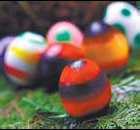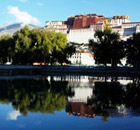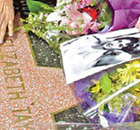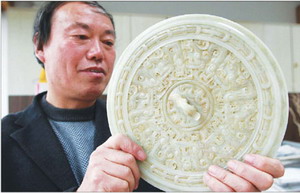Heritage
Murals During the Qin and Han Dynasties
(chinaculture.org)
Updated: 2011-04-19 17:56
 |
Large Medium Small |
During the Qin and Han dynasties, many homes and palaces—particularly those of nobles, bureaucrats and landlords - were decorated with murals, according to a number of historical documents. In addition to decorating the walls, murals of the imperial palace in the Han Dynasty, with their depictions of enlightened emperors, sages, loyal officials and filial children, also played an important role in shaping people’s values.
Only a few palace murals from the Qin and Han Dynasties have been discovered. A mutilated wall was unearthed from the No.3 site of the Xianyang Palace in the Qin Dynasty, which is the oldest palace mural discovered to date. With its images of carriages, horses and houses, this mural was of primitive simplicity, representing the plain techniques of early paintings.
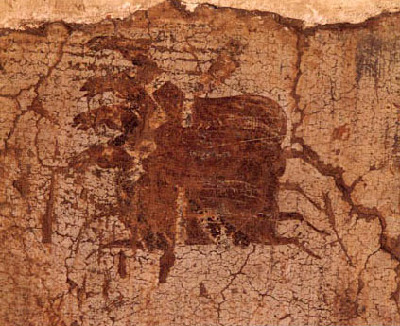 |
|
Mural of horse-drawn carriage (Qin Dynasty) |
Paintings also existed in coffin chambers during the Qin and Han dynasties, but were comparatively rare in the Qin Dynasty. The Western Han Dynasty’s murals are well represented by the Luoyang Coffin Chamber of late Western Han. The mural was painted on 20 bricks that stood on the top of the coffin chamber. The mural depicts a toad, blue dragon, white tiger, rosefinch, monster, figure, moon, and other things. It has the following meaning: lead the spirit to the heaven, be happy forever and protect the coffin from being destroyed by evil.
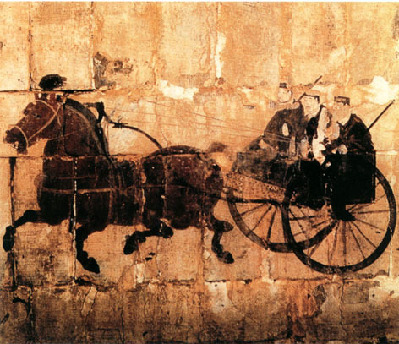 |
|
Mural of driving a carriage (Coffin chamber of the Eastern Han Dynasty, Zhu county, Luoyang city) |
Some other murals that carried similar meanings were discovered in coffin chambers of the Western Han Dynasty as well. For example, a coffin chamber of the late Western Han was discovered in 1957, on the door and wall of which the sun, the moon, the feast, and other things were painted. This mural was also likely to protect the coffin.
However, the themes of murals in the Eastern Han Dynasty were different from those in the Western Han Dynasty. In the East, murals in coffin chambers depicted the status of the dead, painting a majestic picture, which indicated that people there attached more importance to earthly pleasures than to striving to become immortal after death. Famous coffin chambers with murals in the early Eastern Han were represented by one in Hebei province and the other in Shanxi province. The former was designed according to the office of the tomb owner, with his subordinates and attendants depicted in the painting, while on the latter one the picture of Wubi (castle wall) and cattle farming were painted.
Coffin chamber murals of the late Eastern Han Dynasty were represented by one in a coffin chamber made of bricks, and this coffin chamber was discovered in Horinger county, Inner Mongolia. The mural covered an area of 100㎡ and was very rich in content, which mainly described the tomb owner’s official experiences through a painting of traveling by horse-drawn carriages.
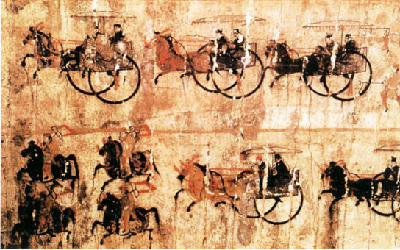 |
|
Mural of travelling in imperial carriages (Partly, Coffin chamber of the Eastern Han Dynasty, Anping county, Hebei province) |
Travelling in carriages dragged by horses was a very common theme in the Han Dynasty’s coffin chamber murals. Their main objective was to show the eminent position of the dead. The mural discovered in Horinger is very vivid, with vigorous steeds and lifelike figures. Another scene of this mural is an exciting and thrilling acrobatic performance, demonstrating power and strength.
In addition to the above-mentioned murals, there were also other typical coffin chamber murals in the Eastern Han Dynasty, such as a mural in Hebei which depicts a story about the dead becoming immortal. On both sides of the door stand warriors with arms, powerful and overwhelming.
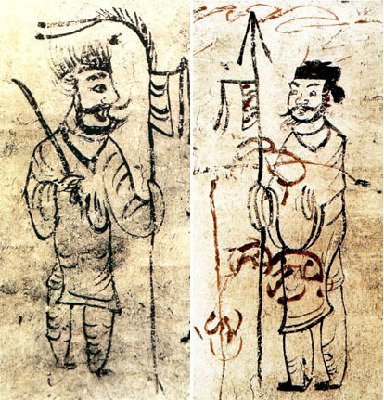 |
|
Mural of armed warriors |
Murals in the Han Dynasty reflect the figures’ characteristics and the texture of their clothes through the use of shading. While in the late Western Han Dynasty, figures and objects were just listed on the wall, in the Eastern Han Dynasty, painters were able to depict complicated scenes involving many figures.

